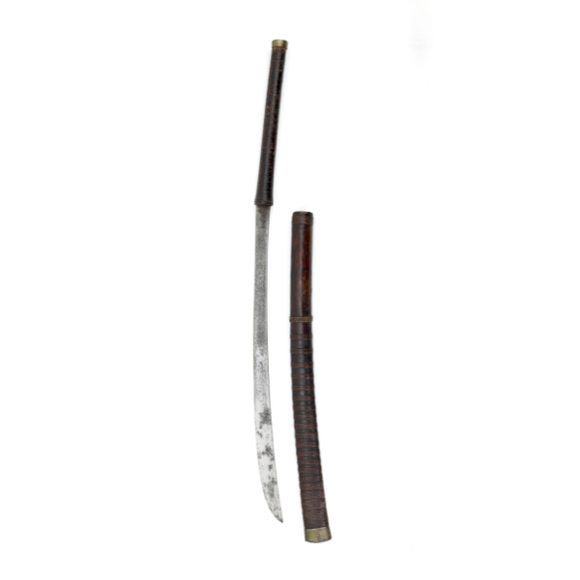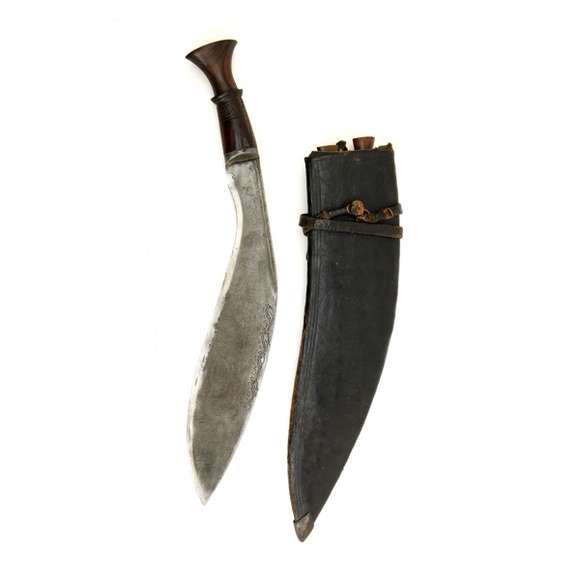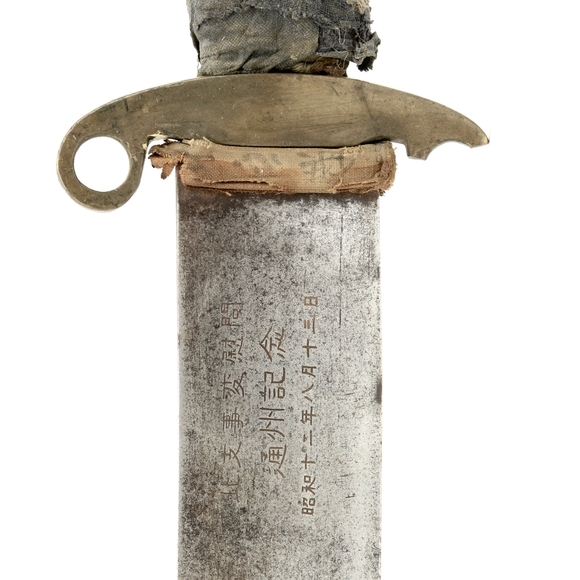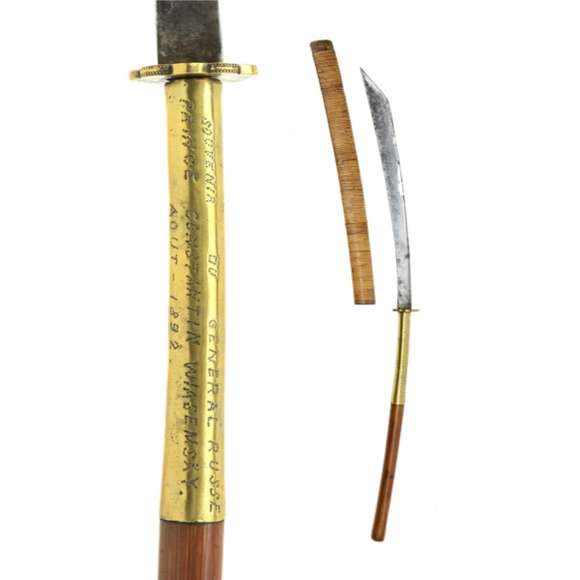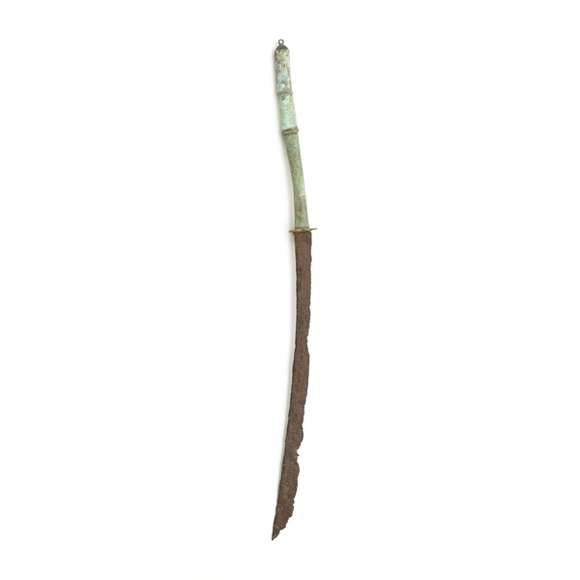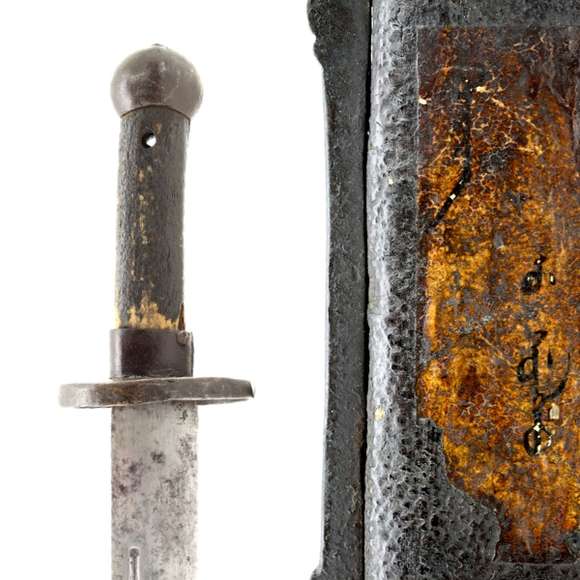Of a type likely produced by the Shan people and traded widely in the region.

Sheathed 39.6 & 39.9 cm
Knives 38.7 & 38.2 cm
Both 25.5 cm
Base 5mm & 4.5 mm
Base 18 & 21.5 mm
271 grams
282 grams
191 grams
200 grams
Iron, steel, wood, silver, resin
Yunnan, China
Late 19th century
Description
A beautifully fine set of silver-mounted knives from Yunnan. Both feature a very pointy blade, one with grooves the other one smooth, both with decorative file work on their spines. Both are unpolished but forged folded, with some of the forging lines visible in its current state.
They are mounted in silver hilts with ribbed lotus bud pommels, typical for the Chinese Shan / Dai people of Yunnan. Each hilt consists of three silver tubes joined together, each with finely chiseled swastika and rolling thunder borders. The quality of the work is excellent.
Hilt markings
Each hilt section carries four cartouches with Chinese characters in them.
Grooved knife

刃专鋼劍
Rèn zhuān gāng jiàn
Special edged steel sword
明皙保身
míng xī bǎoshēn
Bright white (steel) defends the body
鋒利無比
fēnglì wúbǐ
The sharp tip has no equal
Smooth knife

利刃靑鋒
Lì rèn qīng fēng
Sharp edge, blue point
護身了寳
hùshēn le bǎo
Self-protection treasure
鋒利無比
fēnglì wúbǐ
The sharp tip has no equal
Scabbard
Both scabbards are made of hardwood, going from a round cross-section at the hilt to strongly flattened at the end, as is common for many scabbards of mainland Southeast Asia. An interesting feature is that the scabbard was split over the grain rather than sawed in half, making for a seam that is barely noticeable in some points.
Each sheath has three mounts of silver plate, decorated with fine chiseling and punch work. The mouth and endpieces have cloud head cutouts, while the center mount has two lozenges, a mark symbolizing victory. These elements are all very characteristic of Yunnan.

Both scabbard endpieces carry a maker's mark, stamped twice on each piece:
徐記
Xú jì
Xu Mark
Jì (記) was, and is, often used in Chinese brand names. Xú (徐) is a common Chinese surname that is especially found on the eastern coast in the province of Jiangsu. Han Chinese silver workers migrate to and worked all over Southeast Asia, many producing styles that were in local demand. This was probably one such shop set up somewhere in Yunnan to cater to the locals.
Condition
Very good condition throughout, see photos. The only significant damage is some wood lost along the seam of one of the scabbards.



















With markings attributing it to the Tongzhou incident and a Japanese surrender tag.
Collected by a Russian prince from the hill peoples of central Vietnam in 1892.
A standard pattern Qing military saber, but with the rare addition of a label in Manchu.

